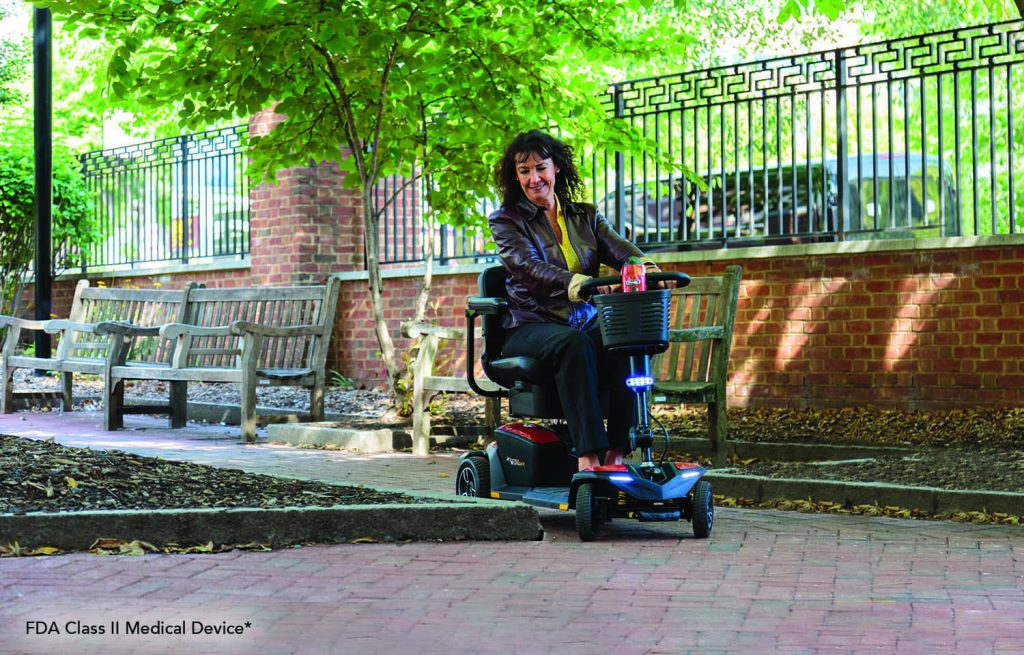Navigating insurance coverage for Durable Medical Equipment (DME) can feel overwhelming, but understanding the process can make a big difference in ensuring you get the equipment you need. With over a decade of experience in the DME industry, I’ve seen how confusing this journey can be for patients, caregivers, and even healthcare providers. This guide will break down the essentials of DME insurance coverage in the U.S., from eligibility requirements and commonly covered equipment to documentation and appeal processes. This article is tailored for U.S.-based readers to provide practical steps, advice, and additional resources to help make sense of insurance coverage for DME.
What is Durable Medical Equipment (DME)?
Durable Medical Equipment (DME) refers to medical devices prescribed by a healthcare provider for long-term use to treat a medical condition, support daily living, or aid in recovery. To qualify as DME, equipment must meet specific criteria, generally including:
- Durability: It’s expected to last three years or more.
- Medical Purpose: It’s intended for use based on a medical need.
- In-Home Use: Most insurance policies cover DME primarily for home use.
Examples of Commonly Covered DME:
- Respiratory devices: Oxygen concentrators, CPAP machines, nebulizers
- Mobility aids: Wheelchairs, walkers, crutches
- Home care equipment: Hospital beds, patient lifts, infusion pumps
- Monitoring devices: Blood glucose monitors, pulse oximeters
1. Understanding Eligibility Requirements for DME Coverage
Eligibility for DME coverage varies across insurance plans, but several core criteria generally apply.
Medical Necessity
For most insurance providers, medical necessity is the critical factor for approving DME. Medical necessity means that a licensed healthcare provider has documented that the equipment is essential for managing a diagnosed condition. This requirement usually involves submitting a Certificate of Medical Necessity (CMN), which includes:
- Patient’s diagnosis
- Detailed equipment description
- Expected usage and duration
- Explanation of why the equipment is medically necessary
Prescription Requirement
Insurance plans require a prescription from an approved healthcare provider. This prescription should specify the type of equipment, usage frequency, and, if applicable, specific settings or features (like flow rate for oxygen concentrators).
Choosing an Approved Supplier
Many insurance plans only cover equipment purchased or rented through approved DME suppliers. Using an approved supplier ensures the equipment meets the insurer’s standards and that claims are processed smoothly. Check with your insurance provider for a list of approved suppliers before purchasing or renting equipment.
Plan-Specific Requirements and Limitations
Some insurance plans have unique criteria based on a patient’s condition, age, or treatment history. For example, a patient might need to meet specific severity criteria for mobility aids, or they may need to attempt other forms of therapy before a DME item is approved.
2. Common Types of DME Covered by Insurance
Insurance policies typically cover a range of DME items, though coverage specifics may differ based on the insurance provider and individual patient needs.
Respiratory Equipment
Devices like CPAP machines, oxygen concentrators, and nebulizers are typically covered, as they’re essential for conditions like COPD, sleep apnea, or asthma.
Mobility Aids
Equipment such as wheelchairs, scooters, crutches, and walkers is generally covered if the patient has documented mobility limitations that impact their daily life.
Home Care Equipment
For patients who need ongoing care at home, hospital beds, patient lifts, and infusion pumps are frequently covered. Most insurance policies require justification from a healthcare provider, especially for items like hospital beds with adjustable settings.
Monitoring Devices
For patients with chronic conditions like diabetes, blood glucose monitors and related supplies may be covered, especially under Medicare Part B or Medicaid, provided they are medically necessary.
3. Steps to Obtain Authorization for DME
Successfully navigating the authorization process is critical to securing DME coverage. Follow these steps to ensure a smoother process:
Step 1: Obtain a Valid Prescription
The first step is to have a licensed healthcare provider write a prescription for the DME. This prescription should clearly specify:
- The equipment type and settings (if applicable)
- Purpose of use
- Expected duration and frequency of use
Step 2: Submit Required Documentation
In addition to the prescription, most insurers will request supporting documentation that confirms the equipment’s medical necessity. This may include:
- Medical history records relevant to the condition
- Diagnostic test results supporting the need for equipment
- Certificate of Medical Necessity (CMN), which further explains the need for the equipment
Step 3: Use an Approved Supplier
Once authorization is granted, select a DME supplier approved by your insurance. Most insurance websites provide a directory of these suppliers, or you can call your provider’s customer service for assistance.
Step 4: Submit the Insurance Claim
Most approved suppliers will handle the claims submission process. However, it’s wise to follow up with both the supplier and insurer to ensure documentation is complete and the claim is moving forward. Check in periodically to catch any potential issues early on.
4. Navigating Documentation Requirements
Accurate documentation is essential for a smooth DME claim process. Here are some tips to help ensure that documentation is in order:
- Provide Comprehensive Information: Include all relevant records, such as diagnosis codes, medical history, and lab results, to clearly support the equipment’s necessity.
- Use Specific Language: Ask your provider to be precise when explaining the equipment’s purpose and the patient’s specific needs.
- Request Pre-Authorization: Some insurers offer pre-authorization for DME, which can confirm coverage ahead of time and reduce the chance of claim denials.
5. Handling Claim Denials
It’s not uncommon for DME claims to be denied initially, but many denials can be appealed successfully with the right information.
Request an Explanation of Benefits (EOB)
After a denial, the insurer will issue an Explanation of Benefits (EOB), which details why the claim was rejected. Review this document to identify any missing information or potential errors in the claim.
File an Appeal
Most insurers allow for an appeal process if a DME claim is denied. During the appeal, submit additional documentation to support the equipment’s necessity. Make sure to file appeals promptly, as most insurers have strict timelines for reconsiderations.
Seek Help from a Patient Advocate
Some healthcare facilities and insurance providers have patient advocates who can assist with the appeals process. Their knowledge of the system can help identify missing documentation or suggest additional steps to improve the chances of approval.
6. Additional Financial Assistance Options for DME
DME can be costly, and insurance doesn’t always cover every piece of equipment or every feature. Here are some additional resources to consider:
Medicare and Medicaid
For eligible individuals, Medicare Part B covers certain DME items when deemed medically necessary. Medicaid programs also offer DME coverage, but specifics vary by state, so contact your local Medicaid office to understand available support.
Non-Profit Organizations
Several non-profit organizations provide financial support, discounted equipment, or direct assistance for DME needs. Examples include the American Lung Association and Muscular Dystrophy Association, which may offer grants, low-cost rentals, or donated equipment.
State and Local Assistance Programs
Certain state programs offer grants or subsidies to help cover medical equipment costs. Contact your state’s Department of Health or human services agency for details on potential assistance.
FAQs
1. What documentation is required for a DME claim?
Typically, insurers require a prescription, a Certificate of Medical Necessity, diagnostic test results, and relevant medical history records to support the equipment’s medical necessity.
2. How can I find out if my DME supplier is approved by my insurance?
Check your insurance provider’s website for an approved supplier directory or contact their customer service directly for guidance.
3. What should I do if my DME claim is denied?
First, review the Explanation of Benefits (EOB) to understand the reason for the denial. You can then file an appeal, often with additional documentation or corrections.
4. Are there specific eligibility requirements for Medicare DME coverage?
Yes, Medicare Part B requires a documented medical necessity and that the equipment is provided by an approved supplier. Some items also need a face-to-face examination with a healthcare provider.
5. Is there financial assistance available for DME if insurance won’t cover it fully?
Yes, there are various non-profit organizations, state assistance programs, and some DME-specific grants that offer financial aid or discounted equipment.
6. Can I buy DME out-of-pocket and still be reimbursed?
It’s best to check with your insurance provider first, as some may only reimburse for items purchased through approved suppliers. In many cases, you’ll need pre-authorization.
Conclusion: Empowering Your DME Insurance Journey
Understanding DME insurance coverage in the U.S. can simplify your journey to secure essential equipment. By meeting eligibility requirements, submitting thorough documentation, and staying proactive with suppliers and insurers, you can improve your chances of approval. If challenges arise, remember that options like patient advocacy and financial assistance programs are available to support you. With the right information and a bit of persistence, managing DME insurance is absolutely achievable.






